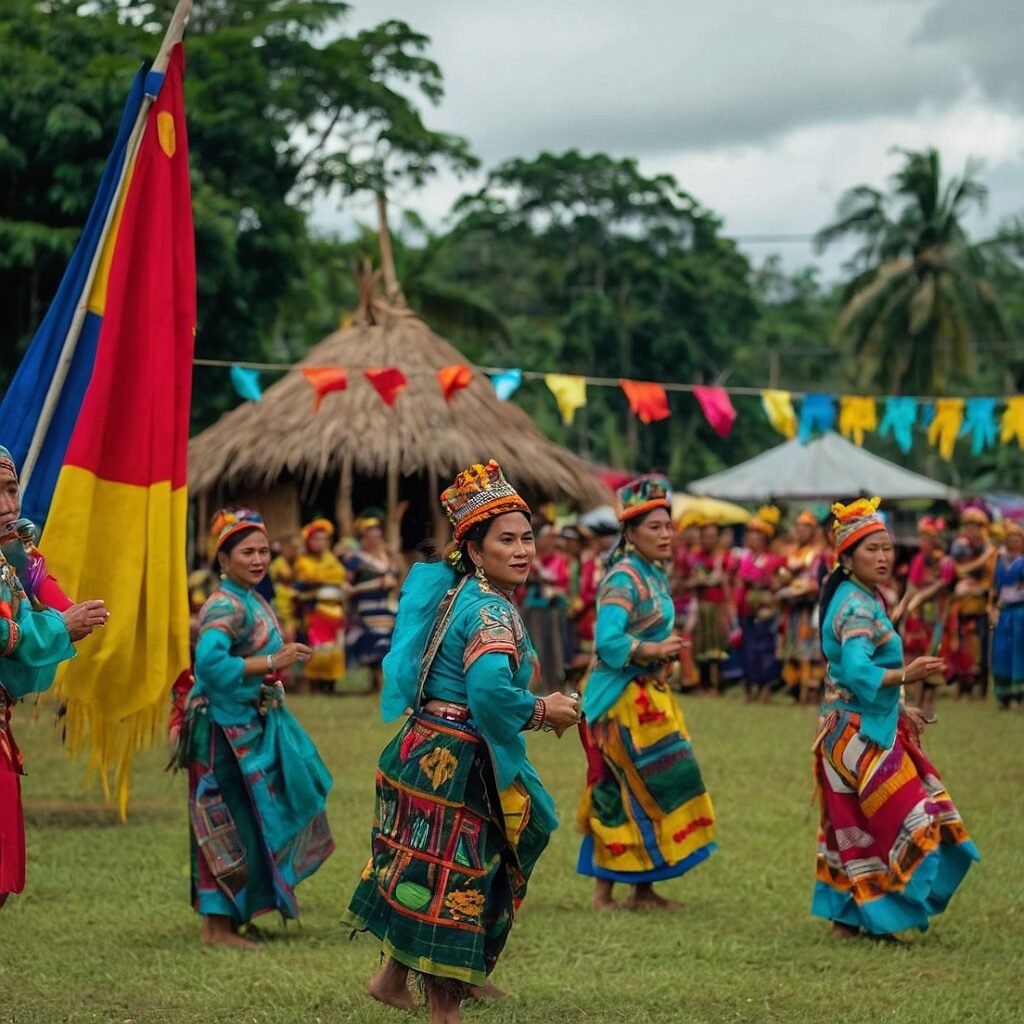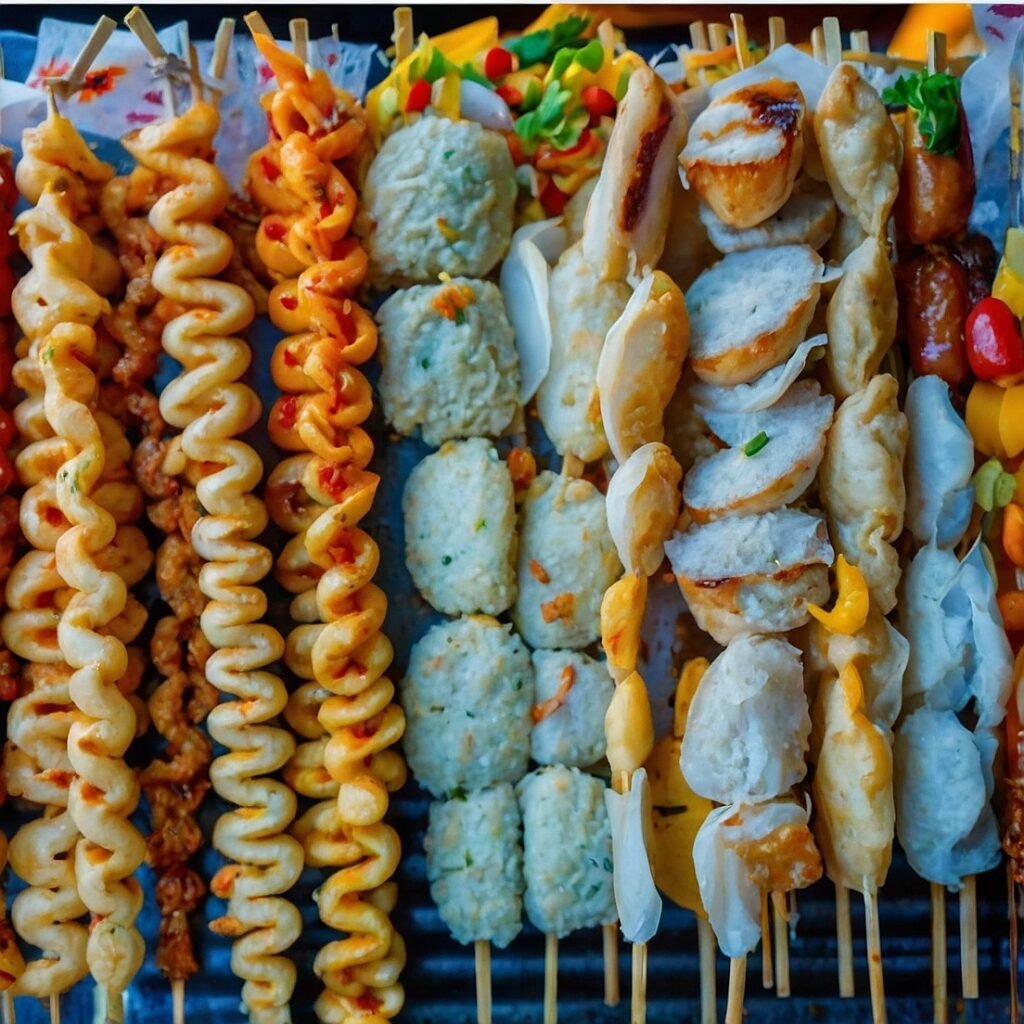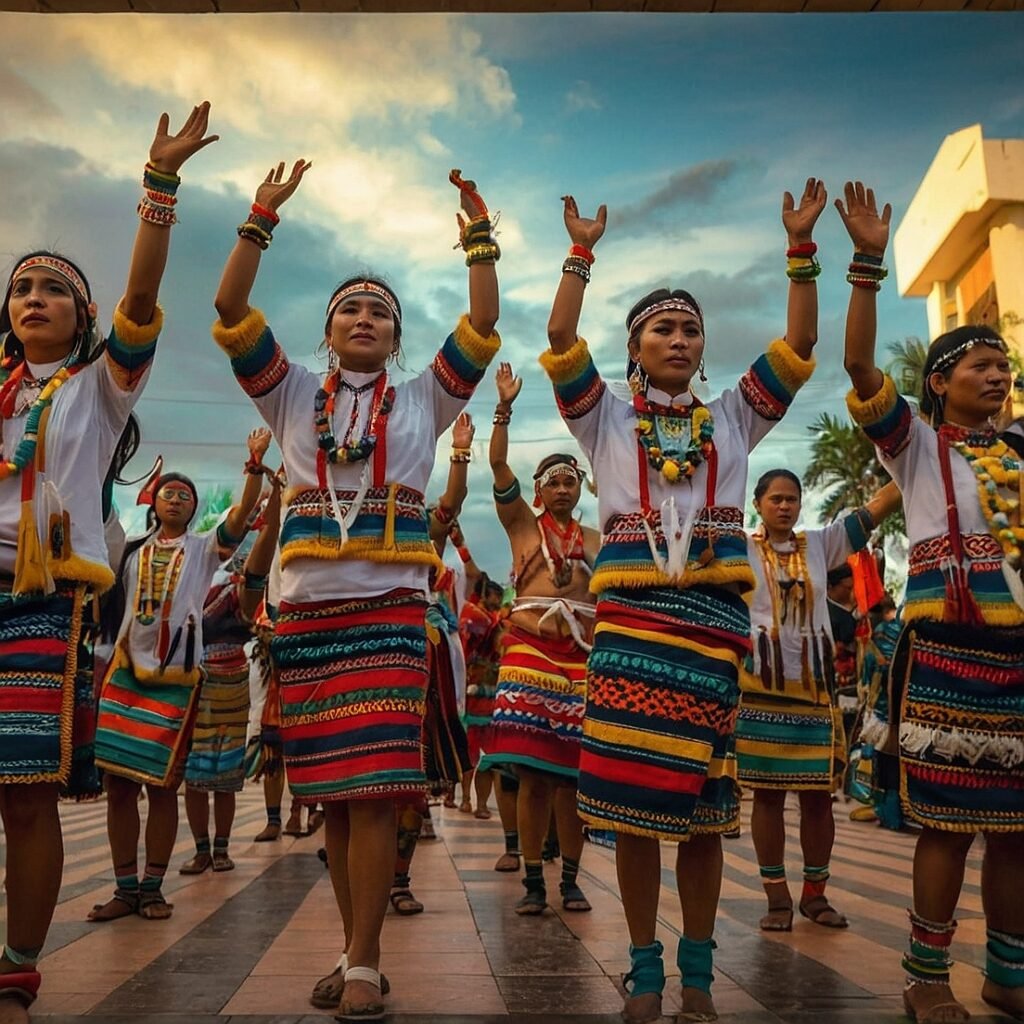Have you ever wondered what it’s like to immerse yourself in a kaleidoscope of colors, rhythms, and traditions that have been passed down through generations? Look no further than the T’nalak Festival, a dazzling celebration that takes place annually in South Cotabato, Philippines. This vibrant event is not just a feast for the senses; it’s a window into the rich cultural heritage of the T’boli people, one of the indigenous groups that call this region home. In this blog post, we’ll take you on a journey through the heart of this festival, exploring its origins, significance, and the myriad ways it showcases the unique artistry and traditions of the T’boli tribe. So, grab a cup of your favorite beverage, sit back, and let’s dive into the colorful world of the T’nalak Festival!
The Origins and Evolution of T’nalak Festival
A Tapestry of History and Culture
The T’nalak Festival didn’t just spring up overnight. Its roots run deep into the cultural soil of South Cotabato, intertwining with the history and traditions of the T’boli people. The festival takes its name from the T’nalak cloth, a sacred textile woven by T’boli women. This isn’t just any ordinary fabric; it’s a tapestry that tells stories, embodies dreams, and carries the weight of ancestral wisdom. The intricate patterns and vibrant colors of the T’nalak cloth are more than mere decoration – they’re a visual language, a way for the T’boli to preserve and pass on their cultural heritage.
From Humble Beginnings to Grand Celebrations
The festival itself began as a small, local celebration in the 1990s. It was a way for the people of South Cotabato to honor their indigenous roots and showcase the beauty of T’boli culture to a wider audience. Over the years, it has grown from a modest gathering into a grand, province-wide event that draws visitors from all corners of the Philippines and even from abroad. Today, the T’nalak Festival is not just a cultural showcase; it’s a major tourism draw and a source of pride for the entire region.
A Time of Unity and Reflection
As the festival evolved, it became more than just a celebration of T’boli culture. It transformed into a unifying event that brings together various ethnic groups in South Cotabato, fostering understanding and appreciation among diverse communities. The T’nalak Festival serves as a reminder of the rich cultural tapestry that makes up the province, encouraging both locals and visitors to reflect on the importance of preserving indigenous traditions in a rapidly changing world.
The Heart of the Festival: T’nalak Cloth and Its Significance
Weaving Dreams into Reality
At the core of the T’nalak Festival lies the T’nalak cloth itself. This isn’t your everyday fabric – it’s a work of art that carries deep spiritual and cultural significance for the T’boli people. T’nalak weaving is more than just a craft; it’s a sacred tradition passed down from mother to daughter. The intricate process of creating T’nalak involves not just skill and patience, but also a connection to the spiritual world.
The Dream Weavers
T’boli weavers, known as “dream weavers,” don’t just create patterns on a whim. The designs they weave into the T’nalak cloth are said to come to them in dreams, gifted by Fu Dalu, the spirit of the abaca fiber. This spiritual connection makes each piece of T’nalak unique and imbued with special meaning. The weavers interpret these dream-inspired designs, translating them into complex patterns using traditional techniques that have been honed over generations.
Colors and Patterns with Meaning
The colors used in T’nalak cloth are not chosen randomly. Each hue has a specific significance in T’boli culture. The three primary colors you’ll see in T’nalak are red, black, and white. Red symbolizes bravery and life, black represents the mysteries of the unknown, and white signifies purity and cleanliness. The patterns woven into the cloth often depict elements from nature, such as mountains, rivers, and local flora and fauna, as well as abstract representations of T’boli myths and legends.
A Symbol of Identity and Heritage
In today’s world, where globalization often leads to the homogenization of cultures, the T’nalak cloth stands as a powerful symbol of T’boli identity and heritage. It’s not just a beautiful textile; it’s a tangible link to the past and a means of preserving cultural knowledge for future generations. The T’nalak Festival celebrates this living tradition, bringing attention to the importance of protecting and promoting indigenous crafts and the wisdom they embody.
The Festival Experience: A Feast for the Senses
A Kaleidoscope of Colors and Sounds
Imagine stepping into a world where every corner bursts with color, every street echoes with music, and the air is filled with the scent of traditional dishes. That’s what awaiting you at the T’nalak Festival. From the moment you arrive, you’re enveloped in a sensory experience unlike any other. The streets of South Cotabato come alive with parades featuring dancers in traditional T’boli attire, their movements synchronized to the beat of native instruments. The vibrant hues of the T’nalak cloth are everywhere, adorning not just the performers but also decorating the town itself.
Rhythm of the Festivities
The festival typically spans several days, usually in July, coinciding with the foundation anniversary of South Cotabato. Each day is packed with events that showcase different aspects of T’boli culture and the broader heritage of the region. From street dancing competitions that fill the air with energy and excitement to cultural shows that offer deeper insights into T’boli traditions, there’s never a dull moment during the T’nalak Festival.
A Gastronomic Adventure
No festival is complete without food, and the T’nalak Festival doesn’t disappoint in this regard. It’s a perfect opportunity to sample traditional T’boli cuisine alongside other local delicacies from South Cotabato. From hearty stews cooked in bamboo tubes to sweet treats made from native ingredients, the festival is a gastronomic adventure that lets you taste the flavors of the region’s rich culinary heritage.
Artistry on Display
One of the highlights of the festival is the numerous exhibits and trade fairs that showcase T’boli craftsmanship. Here, you can see master weavers at work, creating T’nalak cloth right before your eyes. Other traditional crafts like beadwork, brass casting, and wood carving are also on display. These exhibits not only offer a chance to purchase unique, handcrafted souvenirs but also provide an opportunity to appreciate the skill and artistry that goes into creating these cultural artifacts.
Beyond the Festivities: The Impact of T’nalak Festival
Preserving Cultural Heritage
The T’nalak Festival plays a crucial role in preserving and promoting T’boli culture. In an age where many indigenous traditions are at risk of being lost, this annual celebration serves as a powerful reminder of the importance of cultural heritage. It provides a platform for T’boli artisans, musicians, and dancers to showcase their skills and pass on their knowledge to younger generations. The festival has sparked renewed interest in traditional crafts and practices, helping to ensure that these valuable cultural assets are not forgotten.
Boosting Local Economy
Beyond its cultural significance, the T’nalak Festival has become a major economic driver for South Cotabato. The influx of visitors during the festival period provides a significant boost to local businesses, from hotels and restaurants to small craft vendors. It has helped put South Cotabato on the tourism map, attracting visitors who might otherwise not have discovered this beautiful region of the Philippines.
Fostering Cultural Understanding
In a world that sometimes seems increasingly divided, events like the T’nalak Festival serve as bridges between cultures. By inviting people from all walks of life to experience and appreciate T’boli culture, the festival fosters greater understanding and respect for indigenous traditions. It’s a reminder of the rich diversity that makes our world so fascinating and the importance of preserving this diversity for future generations.
Environmental Awareness
Many of the traditional practices celebrated during the T’nalak Festival are deeply rooted in a respect for nature. The festival has become a platform for raising awareness about environmental issues, particularly those affecting the ancestral lands of the T’boli people. By highlighting the deep connection between indigenous cultures and their natural environment, the festival encourages both locals and visitors to think more deeply about conservation and sustainable living.
Participating in the T’nalak Festival: Tips for Visitors
Planning Your Visit
If you’re thinking of experiencing the T’nalak Festival firsthand, a bit of planning can go a long way in ensuring you make the most of your visit. The festival typically takes place in July, but exact dates can vary from year to year, so it’s a good idea to check the official schedule well in advance. South Cotabato’s capital, Koronadal City, is the main hub of festival activities, but events are spread throughout the province.
Getting There and Where to Stay
The nearest airport to South Cotabato is in General Santos City, from where you can take a bus or van to Koronadal City. During the festival period, accommodation can fill up quickly, so it’s advisable to book your lodging well in advance. Options range from hotels in Koronadal City to more rustic accommodations in the surrounding areas, including some that offer a chance to stay in traditional T’boli villages.
Respecting Local Customs
While the T’nalak Festival is a time of celebration and welcomes visitors with open arms, it’s important to remember that you’re entering a space of deep cultural significance. Showing respect for local customs and traditions will enhance your experience and ensure you’re a welcome guest. This might include dressing modestly, asking permission before taking photographs of people or sacred objects, and being mindful of the spiritual significance of certain rituals and artifacts.
Immersing Yourself in the Experience
To truly appreciate the T’nalak Festival, don’t just be a spectator – dive in and participate! Many events offer hands-on experiences, from weaving workshops to traditional dance lessons. Take the time to chat with local artisans, try your hand at playing indigenous instruments, or join in community meals. These interactions will give you a deeper understanding of T’boli culture and create lasting memories of your visit.
The Future of T’nalak Festival: Balancing Tradition and Progress
Adapting to Changing Times
As the T’nalak Festival continues to grow in popularity, it faces the challenge of balancing cultural preservation with the demands of modern tourism. The organizers and the T’boli community are constantly working to ensure that the festival remains true to its roots while also evolving to meet the expectations of a diverse audience. This might involve incorporating new technologies in festival presentations or finding innovative ways to showcase traditional practices.
Empowering the T’boli Community
One of the key focuses for the future of the T’nalak Festival is ensuring that it continues to benefit the T’boli community directly. Initiatives are being developed to provide more opportunities for T’boli artisans to market their crafts, for young people to learn traditional skills, and for the community to have a strong voice in how their culture is presented to the world. The goal is for the festival to be not just a celebration of T’boli culture, but a means of empowering the T’boli people economically and socially.
Expanding Cultural Exchange
Looking ahead, there are plans to expand the cultural exchange aspect of the T’nalak Festival. This could involve inviting indigenous groups from other parts of the Philippines or even from other countries to participate, creating a broader platform for intercultural dialogue and understanding. By fostering these connections, the festival can play a role in building global awareness and appreciation for indigenous cultures.
Sustainability and Conservation
As awareness of environmental issues grows, the T’nalak Festival is likely to place even greater emphasis on sustainability and conservation in the coming years. This could involve showcasing eco-friendly practices rooted in T’boli tradition, promoting sustainable tourism initiatives, and using the festival as a platform to advocate for the protection of indigenous lands and resources.
T’nalak Festival by the Numbers
To give you a clearer picture of the scale and impact of the T’nalak Festival, let’s look at some key figures:
| Year | Estimated Visitors | Economic Impact (PHP) | Participating Artisans |
|---|---|---|---|
| 2017 | 200,000 | 150 million | 500 |
| 2018 | 250,000 | 180 million | 550 |
| 2019 | 300,000 | 200 million | 600 |
| 2020 | Virtual Event | N/A | 300 (online) |
| 2021 | Hybrid Event | 50 million | 400 |
Note: Data for 2020 and 2021 reflect the impact of the global pandemic, which necessitated changes to the festival format.
The Enduring Spirit of T’nalak Festival
As we wrap up our journey through the vibrant world of the T’nalak Festival, it’s clear that this celebration is so much more than just a colorful event on the calendar. It’s a living, breathing testament to the resilience and creativity of the T’boli people, a bridge between past and present, and a beacon of hope for the future of indigenous cultures in a rapidly changing world.
The T’nalak Festival reminds us of the power of tradition to bring people together, to inspire creativity, and to foster understanding across cultural divides. It shows us that in a world often focused on progress and modernization, there is immense value in preserving and celebrating our diverse cultural heritage.
Whether you’re a culture enthusiast, a traveler seeking unique experiences, or simply someone curious about the rich tapestry of human traditions, the T’nalak Festival offers a window into a world of beauty, spirituality, and communal joy. It invites us all to pause, to appreciate the artistry and wisdom of indigenous cultures, and to reflect on our own connections to tradition and community.
So, why not start planning your visit to the next T’nalak Festival? Come and experience the magic for yourself, immerse yourself in the colors, sounds, and flavors of T’boli culture, and be part of this beautiful celebration of heritage and identity. Who knows? You might just find yourself woven into the vibrant tapestry of the T’nalak Festival, carrying a piece of its spirit with you long after the festivities have ended.
Disclaimer: This blog post is based on information available up to 2021. While we strive for accuracy, details about the T’nalak Festival may have changed since then. We encourage readers to check official sources for the most up-to-date information. If you notice any inaccuracies, please report them so we can correct them promptly.




